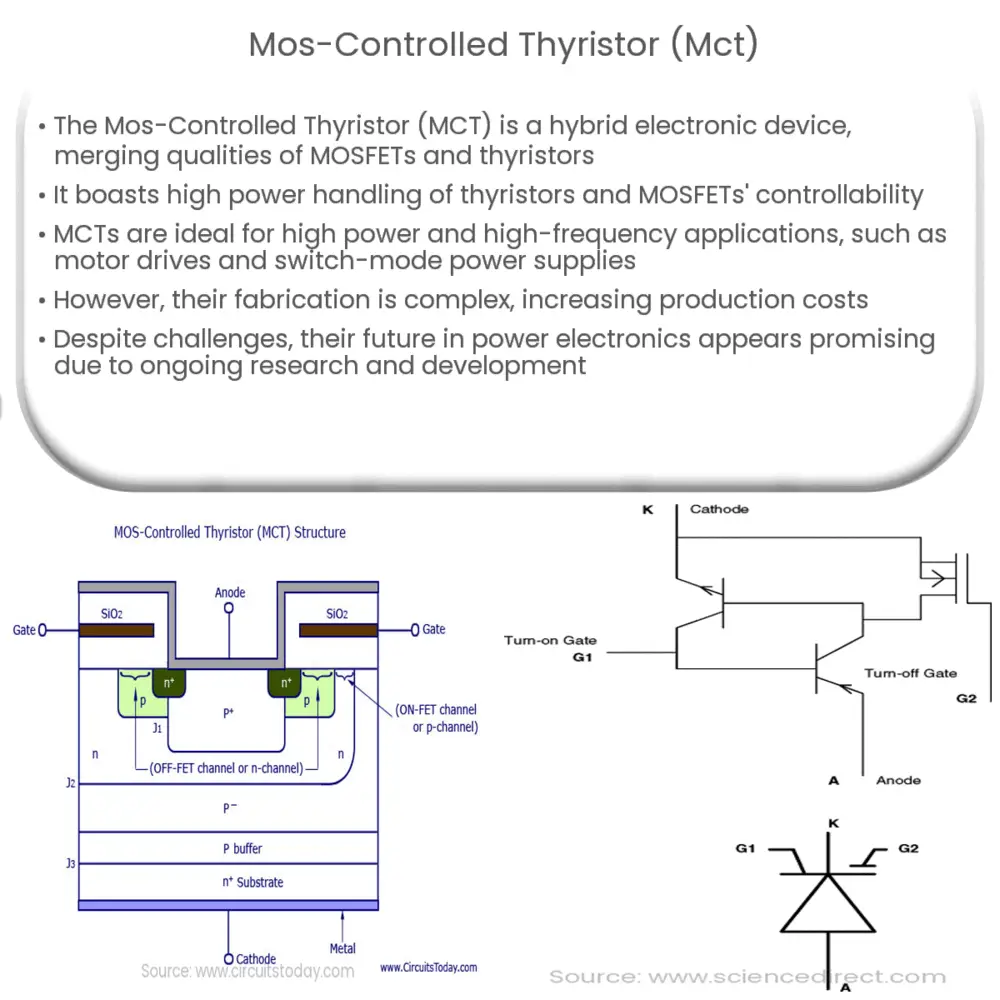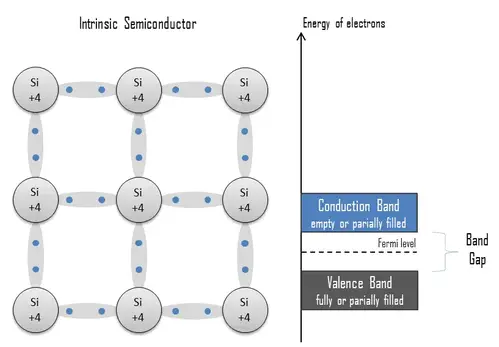Explore the Mos-Controlled Thyristor (MCT), its structure, operation, benefits, challenges, and future prospects in power electronics.

Mos-Controlled Thyristor (MCT): An Overview
The Mos-Controlled Thyristor (MCT) is a unique electronic device that combines features from both Metal-Oxide-Semiconductor Field-Effect Transistors (MOSFETs) and thyristors. This potent combination enables the MCT to offer the best of both worlds, embodying high power handling capabilities of thyristors, and the ease of control characteristic of MOSFETs.
Structure of MCT
The MCT has a four-layer, three-junction structure similar to that of a thyristor. However, it includes two MOS gates, one each for turning the device on and off. This distinctive feature sets the MCT apart from the traditional thyristor, which requires an external signal for turning off.
Operation of MCT
The MCT operates in four modes: forward blocking, forward conducting, reverse blocking, and reverse conducting. In the forward blocking mode, the MCT behaves like an open switch, preventing current flow between the anode and the cathode. When a positive gate voltage is applied, the MCT transitions into the forward conducting mode and acts as a closed switch, allowing current to flow. The transition between these modes is governed by the applied gate signals, providing users a high degree of control over the device’s operation.
Benefits of MCT
-
The MCT’s main advantage lies in its power handling capabilities. It can control high power levels while only requiring a small control signal, which is a significant advantage in applications such as power inverters and converters.
-
Unlike traditional thyristors, MCTs can be turned off using a simple gate signal, simplifying the control scheme and increasing efficiency.
-
MCTs have superior switching speeds compared to thyristors, making them ideal for high-frequency applications.
Applications of MCT
The unique characteristics of MCTs make them suitable for a variety of applications. Their excellent power handling capabilities and control flexibility make them an ideal choice for high power applications such as motor drives, power converters, and inverters. The MCT’s fast switching speed also makes it suitable for high-frequency applications, such as switch-mode power supplies and high-frequency inverters.
Challenges and Future Prospects
Despite its numerous advantages, MCTs face some challenges. The primary one is their relatively complicated fabrication process compared to other power electronic devices, which can increase the cost of production. Furthermore, the MCT’s gate drive circuitry is more complex than a standard thyristor, requiring more sophisticated design techniques.
However, with ongoing advancements in semiconductor technology, these challenges are continuously being addressed. The future of MCTs is promising, with research and development focused on improving the device’s efficiency and reducing fabrication complexities. The goal is to make MCTs more accessible for various applications, including renewable energy systems, electric vehicles, and smart grids.
Comparison with Other Power Electronic Devices
When compared to other power electronic devices, MCTs hold a unique position. They offer superior power handling capabilities compared to IGBTs and MOSFETs, while providing better control and switching speeds than traditional thyristors. Despite their current limitations, MCTs have the potential to become a go-to device in power electronics, especially as research progresses in their development.
Conclusion
In conclusion, the Mos-Controlled Thyristor (MCT) is a powerful device that brings together the best features of MOSFETs and thyristors. Its unique structure and operation offer significant advantages in power handling, control, and switching speed. While there are challenges to overcome, the future of MCTs looks bright with many potential applications. As advancements continue, we can expect to see an increased presence of MCTs in the field of power electronics, contributing to more efficient and powerful electronic systems.



